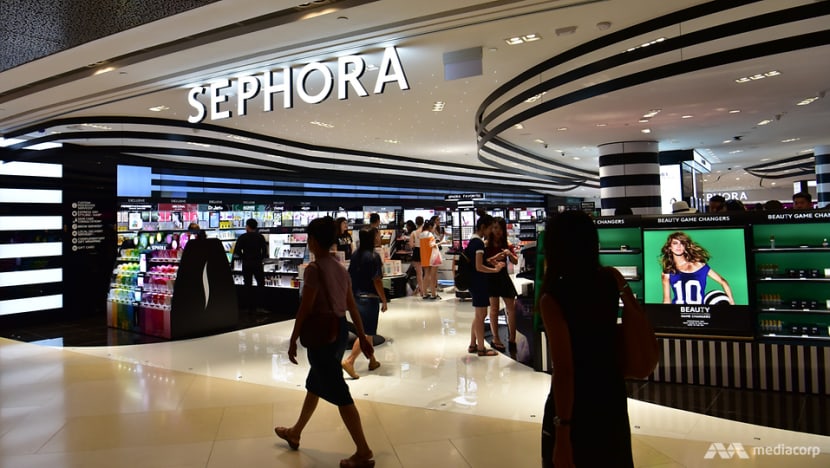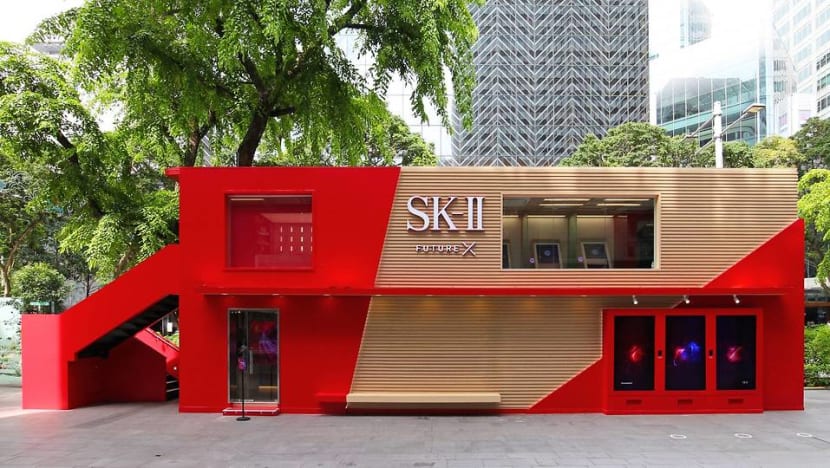commentary Commentary
Commentary: The future of Singapore e-commerce is in brick and mortar
Love, Bonito’s opening of its biggest physical store yet in Funan may be a sign where online shopping will head to next, says NUS Business School’s Associate Professor Tan Soo Jiuan.

Love, Bonito’s Funan outlet. (Photo: Darius Boey)
SINGAPORE: Singaporean online fashion darling Love, Bonito recently opened its largest physical store in Funan Centre.
This is the brand’s third brick-and-mortar store in Singapore, bringing the total in the region to 19.
It is an oddity when you consider that more retailers have moved online with the explosion of online shopping and the massive proliferation of e-commerce apps.
So is Love, Bonito’s move a step back? Actually, it is a step forward.
FROM E-COMMERCE AND BACK
The thing is marketing has grown more sophisticated, aiming to provide the customer with an integrated, seamless shopping experience online and offline.
After all, a majority of consumers do brief research on their smartphones before buying something instore, and a larger proportion browse products at stores before buying these online.
Brands understand and are responding to these trends. Omnichannel marketing has been picking up in other parts of the world, in Europe, the United States and Japan. Amazon, Sephora, Nike, and Uniqlo have achieved some success with this approach.

Local luxury goods store Reebonz and grocery-delivery company honestbee have also taken the leap.
Even retail companies that started as e-commerce plays are discovering limits to their online growth as consumer adoption plateaus. The online marketplace can also be crowded, with advertising expensive and some consumers reluctant to part with payment and personal data.
READ: That unstoppable growth of e-commerce may be coming to an end, a commentary
CONSUMER NEEDS WILL ALWAYS BE KING
Brands are opening brick-and-mortar stores in the hopes that diversifying sales can bridge and enhance the consumer’s journey. But this approach will only work if the brand has already built up an online reputation and can drive traffic to their physical stores.
Indeed, that’s what probably makes Amazon Go so popular in Seattle.
It is a great idea for brands that aim to sell a certain lifestyle and the fashion that comes with it. When it comes to items like clothing and jewellery, consumers prefer to touch, feel and try the products for size and fit.

Seeing how it looks on a model on a smartphone is simply just not enough, not to mention how long the image sometimes take to load.
Being able to try the outfit to see how it looks on you and having the option to mix, match and accessorise is precisely the experience shoppers want.
And being able to buy it right away offers instant gratification. No waiting for shipping or agonising over shipment tracking and disputes.
LOCATION, LOCATION, LOCATION
Location is key to any brick-and-mortar store’s success but it can be pricey to open a storefront in a high-footfall venue like Orchard Road.
But habitat by honestbee is breaking the mould. Its location in Pasir Panjang might help catch the weekday work crowds near Mapletree Business City.
But its clincher is the experience at its high-tech, cashless supermarket and dining concept - which is unique enough that people flock there to shop and eat even on evenings and weekends.
A physical store for an e-commerce company serves three main purposes.

First, as an extension of the brand, it creates consumer visibility and top-of-mind recall when consumers look for relevant products. This halo effect drives shoppers to its online shop.
Second, its physical venue allows for consumers to try, test drive and troubleshoot new products.
READ: More buying counterfeit goods and knock-offs - it's costing billions and more, a commentary
Third, running an online business involves fulfilment costs that range from warehousing, staff and delivery. Having a physical store can even out operating costs since it can carry smaller volumes of items, while also acting as a point for pick-ups and returns.
OPPORTUNITIES AND CHALLENGES
Singapore is moving towards becoming a smart city with pervasive technology. Businesses that venture online have to contend with a crowded and competitive marketplace.
Having a physical presence provides brands with the exposure and consumer insights to distinguish themselves from the pack.
While this approach may work well for popular brands, smaller and less established players will find they have less bargaining power, for instance, when it comes to negotiating rents.

They may need more time and creativity to generate a sufficiently high level of consumer awareness for their brands online before making a huge investment into opening and operating a permanent physical store.
Guerrilla marketing tactics, and the use of pop-up stores, can allow brands to tinker with this space and engage customers – to launch new products, and provide exclusive services.
The omnichannel model is also an opportunity for online brands to curate a more exclusive and focused shopping experience.
Through personalised services, customers who used to shop online only can now enjoy a bespoke experience. For example, Love, Bonito’s new store will feature instagrammable spots, alteration services and personal stylists.
While businesses cannot avoid having on online presence, they also cannot be wholly reliant on it. Brands have got to understand what different segments of customers want and how they shop, both online and offline, and target them accordingly.
As the lines between our offline and online worlds blur, consumers will demand a delightful shopping experience that straddles both from the brands they buy.

This makes imperative the need for retailers to provide timely and useful information, both online and offline, and respond to their customers.
How brands will shape this space is something worth watching.
Tan Soo Jiuan is Associate Professor in the Department of Marketing at the National University of Singapore Business School. The opinions expressed are those of the writer’s and do not represent the views and opinions of NUS.















